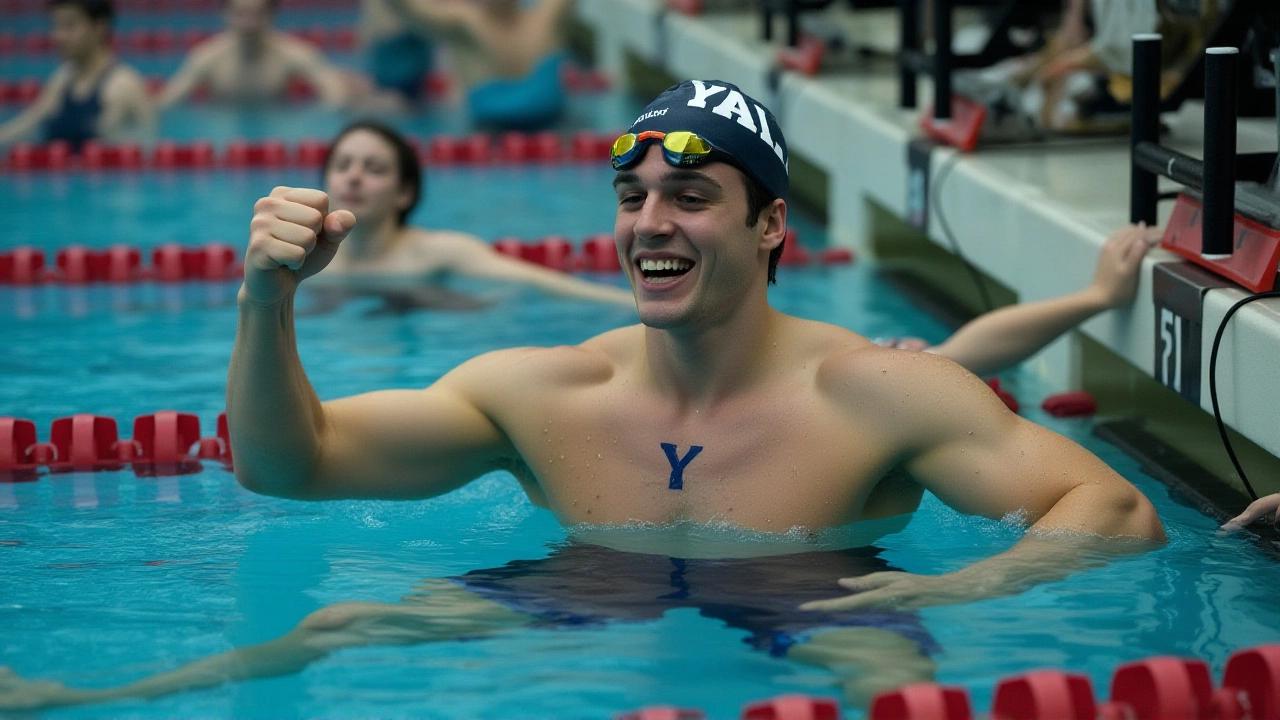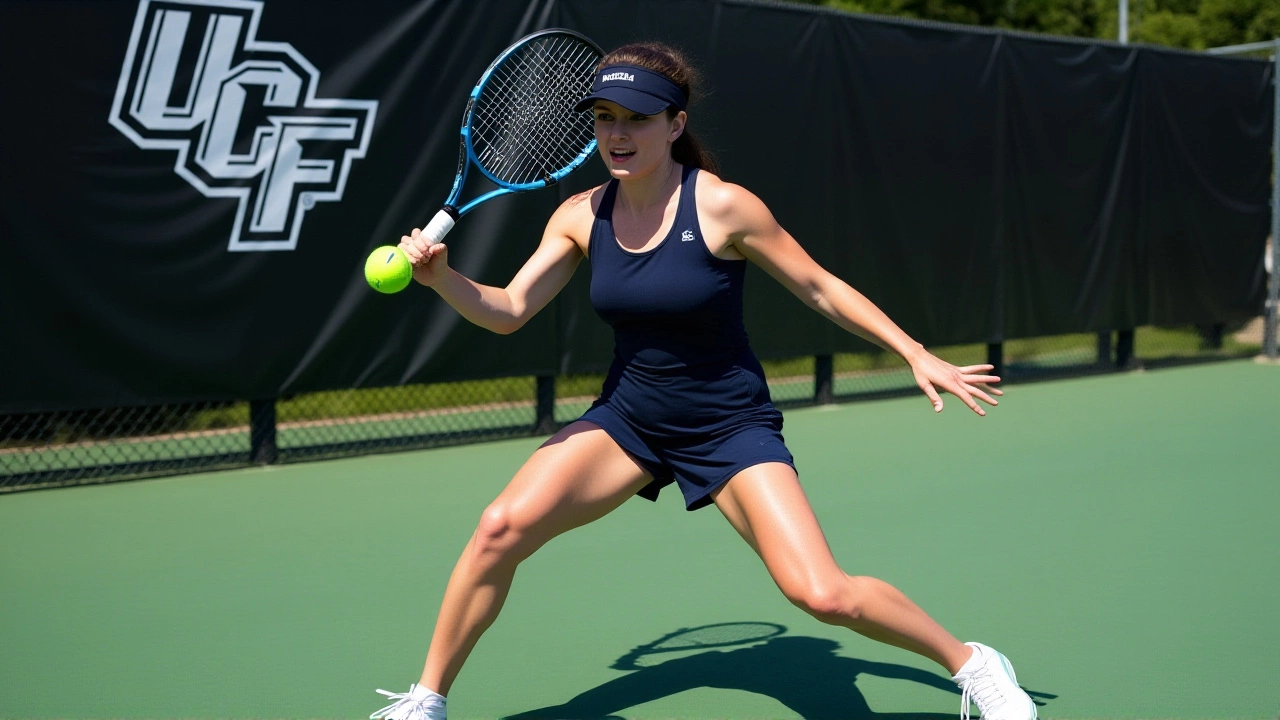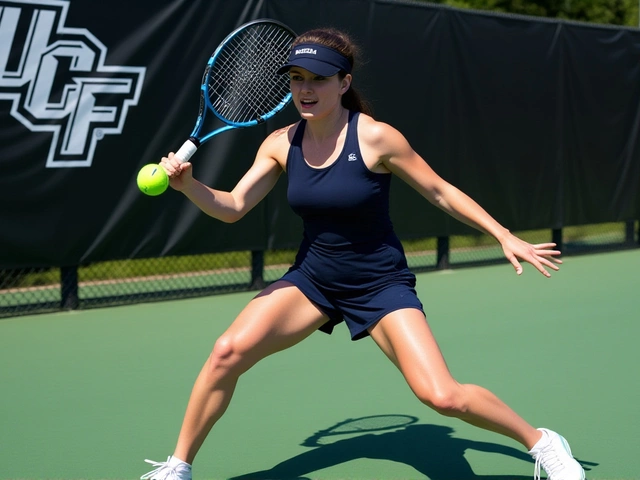When Serafima Shastova stepped onto Court 12 at the USTA National Campus in Orlando, Florida on Tuesday, November 18, 2025, she wasn’t just playing a match—she was closing a chapter. The Syracuse University women’s tennis team, known as the Orange, wrapped up its fall season with a hard-fought 6-2, 7-6(3) loss to Erika Matsuda of the University of Washington in the Round of 64 of the 2025 NCAA Division I Women’s Singles and Doubles ChampionshipsUSTA National Campus. It wasn’t the result they hoped for, but it was a season defined by grit, not just wins.
One Match, One Season
Shastova didn’t go down easy. After dropping the first set 6-2, she dug deep in the second, forcing a tiebreak that saw her save three match points. The crowd, sparse but vocal, rose as she clawed back from 5-2 down in the breaker. But Matsuda, a steady, methodical player who’d won the ITA National Indoor title just weeks earlier, held her nerve. The final point—a backhand crosscourt winner—ended Shastova’s run. And with it, Syracuse’s competitive fall season. "It’s never easy to lose, especially when you’re this close," Shastova said afterward, her voice calm but tired. "But we knew coming in we had to earn every point. And we did." The Orange had entered the tournament with modest expectations. No Syracuse player was seeded in singles. But that didn’t stop them from showing up. Shastova’s performance mirrored the team’s entire fall: consistent, tough, and quietly impressive.Doubles Duo Almost Made It
While Shastova’s singles run ended in Orlando, the real story of the fall had already unfolded at the ITA East Sectional ChampionshipRaleigh, North Carolina just over a week earlier. Doubles team Anastasia Sysoeva and Nelly Knezkova stunned the No. 4 seeds from South Carolina, Bella Bergqvist Larsson and Kaitlyn Carnicella, 6-1, 6-2 on November 7. That win alone was a statement—Syracuse doesn’t just show up; sometimes, they shake the bracket. They were set to face North Carolina State’s Jasmine Conway and Anna Zyryanova the next day, but the result remains unconfirmed. Still, their semifinal berth was the deepest run by a Syracuse doubles pair since 2021. And Sysoeva didn’t stop there. She also competed in the singles consolation bracket, defeating Penn’s Maya Urata 6-4, 7-6(5) in a match that lasted two hours and twenty-three minutes. Two matches in one day. No rest. Just tennis.
The Bigger Picture
The 2025 NCAA Division I Women’s Singles and Doubles ChampionshipsUSTA National Campus featured 64 singles players and 32 doubles teams, all selected through a complex ITA qualification system that began tracking rankings on September 7, 2025. The tournament wasn’t just about college tennis—it was a showcase of the sport’s future. The final day, November 23, even hosted the ITA Collegiate Wheelchair National Individual ChampionshipsUSTA National Campus, a reminder that the sport is growing beyond traditional boundaries. Syracuse didn’t advance past the first round. But their presence mattered. In a field dominated by powerhouses like Stanford, Texas, and Florida, the Orange were the underdogs who refused to be invisible.What’s Next?
With the fall season officially closed—Syracuse Athletics confirmed the conclusion on November 18 at 9:07 p.m.—the team now shifts focus to winter conditioning and early spring preparation. The NCAA Division I Women’s Tennis Championship in May will be their real target. This fall wasn’t about trophies. It was about building. Shastova’s resilience. Sysoeva’s endurance. Knezkova’s poise. These are the building blocks. "We’re not done," said head coach Amanda Hines in a brief statement. "This is just the first draft of what we’re becoming."
Behind the Scenes
The ITA selection process this year was stricter than ever. Only players who competed in at least three ITA-sanctioned events and maintained a top-150 national ranking qualified. Syracuse had two players meet the threshold: Shastova and Sysoeva. Knezkova narrowly missed by 0.03 points in the final calculation—a margin thinner than a tennis string. The USTA National Campus, which hosted the event for the third straight year, saw over 2,800 matches played across all divisions during the week. More than 150 college programs were represented. For a small program like Syracuse, being there at all was an achievement.Frequently Asked Questions
How did Syracuse qualify for the NCAA Championships?
Syracuse earned two spots through the ITA’s fall qualification system. Serafima Shastova qualified via her national ranking, while Anastasia Sysoeva and Nelly Knezkova earned their doubles berth by reaching the semifinals of the ITA East Sectional Championship. Only players and teams who competed in at least three ITA events and ranked in the top 150 nationally were eligible.
Why didn’t Syracuse advance further in doubles?
Sysoeva and Knezkova reached the semifinals at the ITA East Sectional, which secured their NCAA bid, but they never played their scheduled Round of 32 match in Orlando because the NCAA doubles draw only includes teams that qualified directly through ITA events—not those who earned at-large bids through sectional performance. Their NCAA entry was as a replacement, and they were not seeded, meaning they didn’t advance past the initial entry stage.
What’s the significance of the USTA National Campus hosting this event?
The USTA National Campus in Orlando is the only facility in the U.S. designed specifically for elite collegiate tennis, with 60 courts and live streaming capabilities. Hosting the NCAA Singles and Doubles Championships there since 2023 has elevated the event’s profile, allowing smaller programs like Syracuse to compete on the same courts as national champions—something that wasn’t possible in past years when events rotated between campus sites.
How does this season compare to past years for Syracuse women’s tennis?
This was Syracuse’s most successful fall since 2021, when they last had two players qualify for the NCAA Singles Championship. The team’s doubles semifinal appearance was their best since 2019. With three players competing across singles and doubles, and no seniors on the roster, the program is clearly on an upward trajectory heading into the 2026 spring season.

